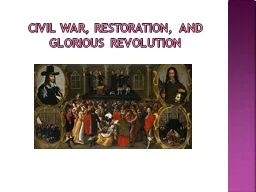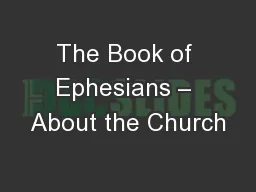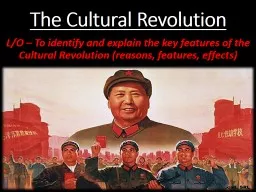PPT-Glorious Revolution
Author : pasty-toler | Published Date : 2015-10-28
Glorious Revolution When did the Glorious Revolution take place 1688 Who was the King of England at the time of the Glorious Revolution King James II What religion
Presentation Embed Code
Download Presentation
Download Presentation The PPT/PDF document "Glorious Revolution" is the property of its rightful owner. Permission is granted to download and print the materials on this website for personal, non-commercial use only, and to display it on your personal computer provided you do not modify the materials and that you retain all copyright notices contained in the materials. By downloading content from our website, you accept the terms of this agreement.
Glorious Revolution: Transcript
Download Rules Of Document
"Glorious Revolution"The content belongs to its owner. You may download and print it for personal use, without modification, and keep all copyright notices. By downloading, you agree to these terms.
Related Documents














